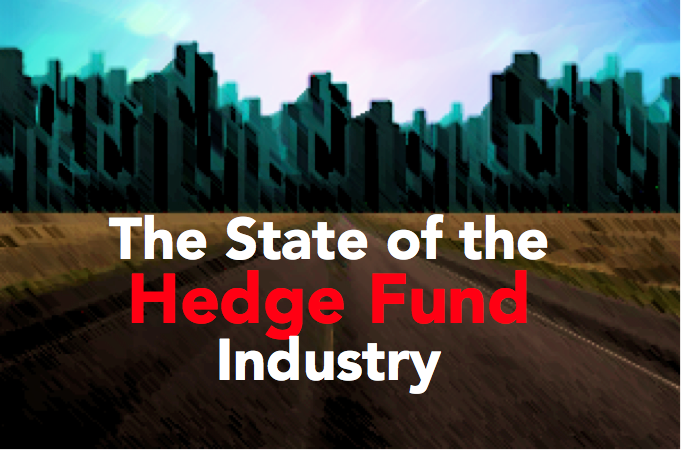
The State of the Hedge Fund Industry – Opportunity(ies) In The Face Of Adversity
92% of
#hedgefund assets controlled by 11% of managers http://bit.ly/1cZKkYf via@HFMWeek@chris_josselyn@Preqin
In a world marked by big political and economic tension the Hedge fund industry assets are set to surpass USD 3 trillion by year end 2015. These numbers display a growth of a further 7% for the industry, according to March 2015 research from Deutsche Bank – Alternative Investment Survey – highlighting hedge fund sentiment and allocation trends.
The industry, still in its early days, is growing and Institutional investment in hedge funds is set to increase. 39% of 435 hedge fund investors, representing over USD 1.8 trillion in hedge fund assets under management (AUM) disclosed that are planning to increase their allocation to hedge funds in 2015.
All of this in a landscape where Hedge funds have become notorious, since the financial crisis for lagging the broader market appeal. Moreover for the sixth year in a row, with a gain of 2.1 percent, the Bloomberg Global Aggregate Hedge Fund Index has been doing worse than both the Standard & Poor’s 500-stock index and a balanced portfolio of three parts equities to two parts bonds. So the question is with underperformance becoming almost routine, what sets apart this still fast growing alternatives industry?
Independent of Warren Buffett had joined the anti-hedge fund chorus in May the industry seems unstopable. It is important to note nevertheless that Buffet was one of the first hedge funds pioneers… Nevertheless his remarks have intensify more adversity / bad publicity towards the industry.
The episode happened when a board member at the $17 billion San Francisco Employees’ Retirement System pension fund wrote to ask his advice on the asset class, On the case Buffett scribbled back:
“I would not go with hedge funds — would prefer index funds.” He underlined the word “not.”
So if 2014 apart was a growing challenge for the industry to get less complicated, and ease up on fees, 2015 is another year. And with each new year new opportunities in the face of adversity.
Hedge funds are diversifying and growing out of their initial trademark
Don Steinbrugge, the founder and Chairman of Agecroft Partners, an influential industry personality consultant and marketer, is bolder towards the industry and states that the agitations of Calpers and negative quotes from Buffett will have “very little impact” in the insdutry. Hedge funds are diversifying and getting more of their money from pensions, endowments, and other institutional clients—63 percent in 2014 from 45 percent in 2008, according to data firm Preqin. These investors are comfortable with mid-single-digit gains that, in theory, come with some downside protection if markets turn bearish.
So the conclusion to some pundits of the industry is that it needs to be even further risky taker and special innovative and driven with better sense of compliance. And definitely has to work on its brand / PR issues. There is a competition for a place in the sun in a very competitive industry where, more and more, hedge fund assets are concentrated among the largest managers. And “as institutional investors’ needs continue to evolve, they (investors) are increasingly looking to work with larger hedge fund managers and intermediaries who can meet their appetite for comprehensive portfolio solutions,” said Barry Bausano, Co-head of Global Prime Finance at Deutsche Bank.
The shift in diversification has helped the alternative inbestors – hedge funds – to grow its total assets under management substantially. Moreover, even if more than 950 hedge funds (and funds of funds) have been liquidated from October 2013 to October 2014, more than in any year since the financial crisis the numbers are still growing. And yet so many more hedge funds are starting – the new concept os hedge fund startup is picking – that the total number hit a peak in the third quarter of 2014, HFR estimates, at 10,119, finally topping the precrisis level of 2007.

Less than 200 hedge fund firms, account for more than two thirds of industry assets!
Hedge Funds represent a special irreverent spot within the general finance industry. Thye have a strong focus on resilience, persistence and this independent of a six years of underperformance, is the proper context in which to view the still emerging industry. These factors explain why the Deutsche Bank – Alternative Investment Survey – displays that the Asset growth continues expand and of course to be concentrated among the largest managers.
The reality is that since 2008, assets managed by firms with more than USD 5 billion AUM have grown 141%, compared to 53% for firms with less than USD 5 billion. Today, it is estimated that a very small group of players, less than 200 hedge fund firms, account for more than two thirds of industry assets.
Therefore the challenge will be concentration and perhaps monopoly. And in this context innovation and good teams are critical. Accessing skilled managers is ever more critical than ever. Manager selection is becoming increasingly important, as the competition gets better and the gap between outperforming and underperforming hedge funds widens. While the average hedge fund returned 3.33% in 2014, the crude reality is that top 5th percentile players generated returns greater than 22%. And these are the drivers and definitive powerhouses of the industry.
Competitive Advantage and Questions facing the Hedge Fund Industry
Hedge fund managers who continue to focus on alignment of interests with the allocator community will have an increasingly competitive advantage as the industry grows and evolves. Reward for alpha generation and co-investment opportunities will be key factors in building strong partnerships between limited partnerships and general partnerships.
- With the Increasing Allocating To Alternatives – what are the Opportunities In The Face Of Adversity?
- What Makes The Ultimate Business Case For Alternatives?
- How to build An Alternative Investment Portfolio in an increasing concentrated and competitive industry?
- Which Investment Strategies Work & Which Don’t for Hedge Fund Investors?
- How To Create Value In An Increasingly Institutional Hedge Fund Industry that is in a continuous Moving Target?
- Industry Futures: How is going to be The Institutionalisation Of The Alternatives Industry?
- How will the use of algorithm / technology / AI trading strategies drive the top performer players?
Sources:
Deutsche Bank releases annual Alternative Investment Survey highlighting hedge fund sentiment and allocation trends for 2015
What’s Ahead for Hedge Funds?

Dinis Guarda is an author, academic, influencer, serial entrepreneur and leader in 4IR, AI, Fintech, digital transformation and Blockchain. With over two decades of experience in international business, C level positions and digital transformation, Dinis has worked with new tech, cryptocurrencies, drive ICOs, regulation, compliance, legal international processes, and has created a bank, and been involved in the inception of some of the top 100 digital currencies.
Dinis has created various companies such as Ztudium tech platform a digital and blockchain startup that created the software Blockimpact (sold to Glance Technologies Inc) and founder and publisher of intelligenthq.com, hedgethink.com, fashionabc.org and tradersdna.com. Dinis is also the co-founder of techabc and citiesabc, a digital transformation platform to empower, guide and index cities through 4IR based technologies like blockchain, AI, IoT, etc.
He has been working with the likes of UN / UNITAR, UNESCO, European Space Agency, Davos WEF, Philips, Saxo Bank, Mastercard, Barclays and governments all over the world.
He has been a guest lecturer at Copenhagen Business School, Group INSEEC/Monaco University, where he coordinates executive Masters and MBAs.
As an author, Dinis Guarda published the book 4IR: AI, Blockchain, FinTech, IoT, Reinventing a Nation in 2019. His upcoming book, titled 4IR Magna Carta Cities ABC: A tech AI blockchain 4IR Smart Cities Data Research Charter of Liberties for our humanity is due to be published in 2020.
He is ranked as one of the most influential people in Blockchain in the world by Right Relevance as well as being listed in Cointelegraph’s Top People In Blockchain and Rise Global’s The Artificial Intelligence Power 100. He was also listed as one of the 100 B2B Thought Leaders and Influencers to Follow in 2020 by Thinkers360.


































